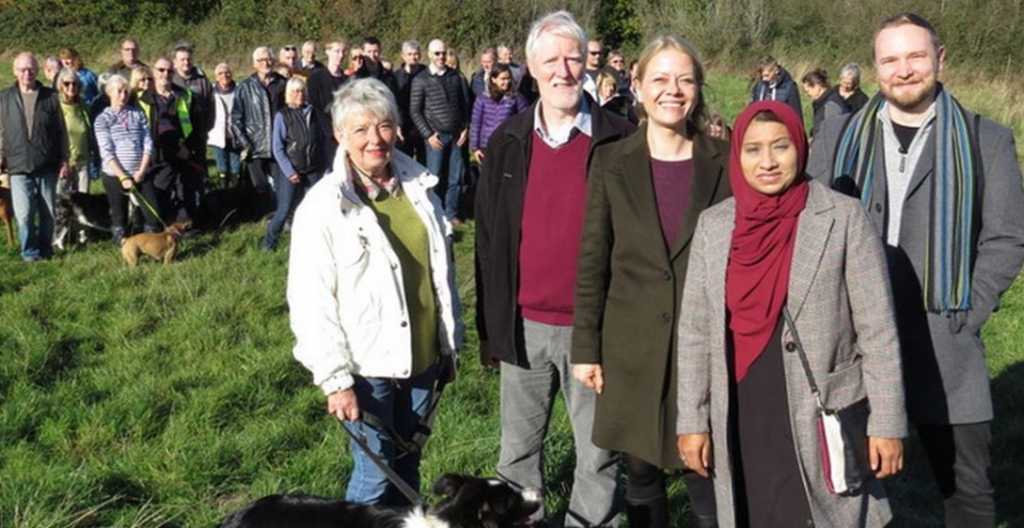Fight to protect Solihull’s green belt will continue, campaigners vow

Campaigners have vowed to continue their fight to protect green belt sites in Solihull from major housing development.
Only weeks ago, Shirley residents celebrated the news that the council had abandoned plans to allocate homes on a particularly precious stretch of open space.
But they argue the latest version of the authority’s Local Plan would still see the area take “the biggest chunk” of the properties proposed over the next 15 years.
This, they say, would choke roads, increase flooding and fill the gaps which keep the Blythe Valley’s villages separate.
In a rallying cry last week (Thursday), Sylvia Gardiner, from the South Solihull Community Group (SSCG), told more than 100 residents at Light Hall School that the battle would carry on.
“I was brought up in Sparkbrook, we had no parks, we played in the street,” she said.
“When I moved to our area I thought I’d died and gone to heaven because of the open space.
“And if we lose it, it’s dangerous. We’re not going to allow it.”
Solihull Council had decided to remove Allocation 13 – a green space to the south of the Woodlands estate – from the latest draft of the Local Plan.
Speaking last month, senior councillors said they had listened to the concerns raised by campaigners.
But more than 2,000 homes could yet be built on four other sites around Shirley and its surrounding villages.
The proposals include up to 350 homes to the west of Dickens Heath, up to 1,000 to the south of Dog Kennel Lane and up to 300 at Whitlock’s End Farm – just next to Allocation 13.
All three pieces of land lie in the green belt, with up to 640 more properties planned for a fourth site – at The Green, Stratford Road – which is brownfield.
Jean Walters, from the Campaign to Protect Rural England (CPRE), said that the proposals would come on the back of extensive recent development in that part of the borough.
“Yes we need more houses, of course we do, but they should be the right type and in the right place,” she said.
“Residents have to drive to their work, which is predominantly located to the east of the borough, causing commuter chaos in this area – along rural roads which were not designed for such volumes of traffic.
“This is an unsustainable situation now, without the additional proposed developments exacerbating the situation.”
She quoted the example of Dickens Heath, a village which she claimed had “reached the limit” of its expansion.
The public meeting also heard from SSCG secretary John Green, Prof Kathryn Moore, from Birmingham City University, and ward councillors.
Cllr Max McLoughlin (Green, Shirley South) urged the audience to have their say, but said objections must be rooted in planning policy.
“One of the problems that I think we face is that volume of opposition does not matter and I’ve had that said to me so many times by planners.
“I find it very frustrating because I think most of us feel we live in a democracy, a weight of opinion probably feels important to us.”
Fellow ward councillor Angela Sandison (Con) said she was concerned that the amount of homes planned for the Shirley area is too high.
“I see an awful lot of brownfield sites not being used by Birmingham,” she added.
The six-week consultation on the latest draft of the Local Plan will run until 15 March http://www.solihull.gov.uk/lpr with a number of drop-in sessions taking place around the borough.
Cllr Ian Courts, cabinet member for managed growth, said that having a “robust” blueprint for future development was essential.
“[It is] the only way we can maintain the balance between future growth and the things that make Solihull so special, captured in the borough motto ’Urbs in Rure.”
Read more: https://www.birminghammail.co.uk/news/midlands-news/fight-protect-solihulls-green-belt-15766903

